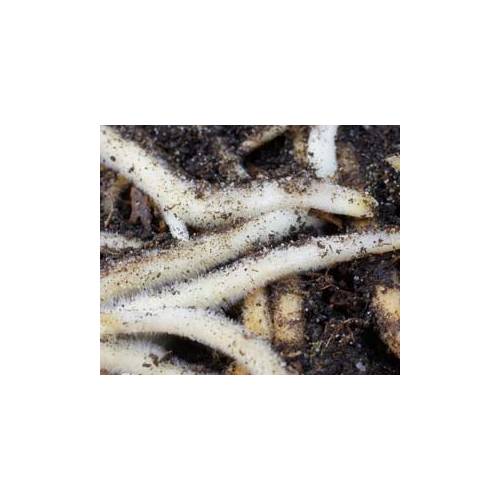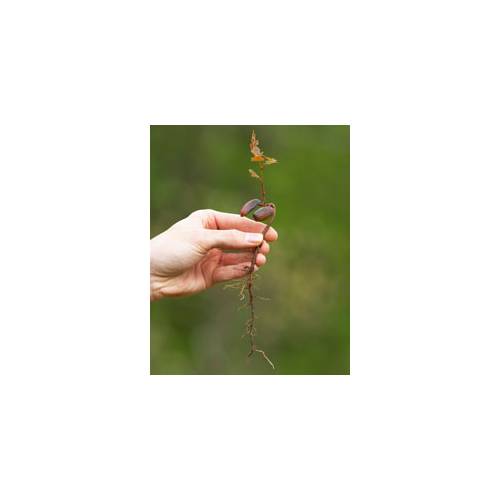
Understand how plants function
The roots
- Details
-
An unknown world but vital
To grow a plant needs water and nutrients as well as Carbon Dioxide CO2). The nutrients are mineral salts that it will search out in the ground thanks to its roots. If the roots are in a bad state then the plant is bound to suffer and waste away, hence the importance of taking care of the underground part of the plant!
In the ground the roots do not spread out in a haphasard way, even though at first sight they may just appear to be a messy tangle. A plant has two types of root: the primary and the secondary roots. It is the primary roots that will determine the formation of the secondary roots and hence the overall vitality of the plant roots…and thus in short its strength.
The small primordial roots
The primary roots are very fine and tender. They grow towards the substratum (the soil or compost in the case of a pot) that is best suited to fulfill the plant's needs. In a way the plant is checking out the soil around it by sending out these small roots. With the help of special hairs, these roots will extract water and mineral salts from the ground. If the area is deemed to be favourable (a good quantity of water, a soil that is neither too hard nor too loose, a sufficient amount and quality of mineral salts) then the primary root will develop and transform itself little by little into a secondary root. This primary root will in turn start sending out roots, loose its ability to absorb and cede this function to its "offspring roots", which themselves are now primary roots... and so on.
Little by little the plant builds up its root system, which is made up of large main routes(on a tree they can be as big as the main branches), primary roots and a multitude of roots linking the primary roots to the stem exactly in the same way as branches link the leaves to the trunk. The main body of the roots that are able to absorb the nutrients from the soil sit under the boughs of the tree; it is therefore in this area that any feed needs to be concentrated as it is here that it will benefit the highest number of "active" roots.
An efficient and compact system
Thanks to this system, a plant can exploit a very large area of soil. It is estimated that for one rye plant the root system exploits several hundred square meters. Imagine the volume that could be used by a big tree, it's colossal!
Taking care of a plant's roots means that you are also looking after the plant. Be careful not to harm or cut a plant's roots unless it is justified. Avoid passing the rotavator around the base of a blackcurrant bush, or cutting through roots with your spade. Also avoid stamping down the ground around plants as it compacts the soil and makes harder work for the roots. Luckily earth worms are also there to aerate the soil and help the plant's roots! - Photos (2)


